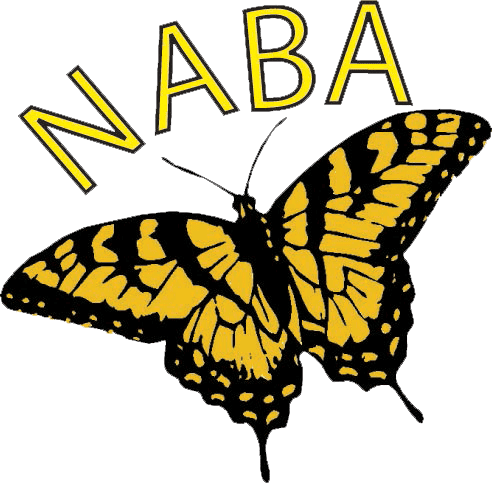![]()
How to Start a Butterfly Garden

Beginning a butterfly garden can be as simple as choosing flowering plants that will invite adult butterflies to your garden to feed. But if you want to create a butterfly garden that will act as a sanctuary, attracting a wide variety of butterflies while also providing a place where butterflies can grow and multiply, you will first need some simple planning. By considering which plants to grow and evaluating your garden site, you can plant a butterfly garden that will help with the creation of more butterflies.
Plant Selection
Many flowering plants will attract butterflies to your location, but not all flowers are created equally in the compound eyes of a butterfly. Selecting plants that will feed butterflies while also encouraging them to stick around for a while, laying eggs and creating a new generation of butterflies, is your goal. To do this, you will need to choose plants that fall into two groups: nectar plants that will provide adult butterflies with energy and caterpillar food plants that will feed caterpillars. With careful selection from these two groups, your garden will provide for the entire life cycle of butterflies.
Choosing Nectar Plants

While shopping for garden plants, you will encounter many plants labeled “butterfly friendly.” These labels are most likely telling the truth and if you choose plants labeled for butterfly gardens, they will attract butterflies. Most likely, though, these plants are nectar plants, marketed for their bright blooms, and will not provide for the caterpillar stage of a butterfly’s life. Although many flowering plants provide nectar to butterflies, it is worth doing a little research to find you what plants attract the most butterflies in your area. Just as growing conditions vary by location, so do the popularity of butterfly nectar plants. Some plants will serve as both nectar and caterpillar food plants and it may be worth searching out some of these double duty offerings.
Choosing Caterpillar Food Plants
The relationship between butterflies, caterpillars and the plants they use for food is not a casual one. It is a relationship created over thousands of years as flowering plants developed along side insects. As a result of this long development, caterpillars will use only certain plants for food. At the same time, butterflies are equally picky about what plants they will select to lay their eggs on. In order to encourage caterpillars in the garden, butterfly gardeners need only select the plants that are preferred by caterpillars in their location. Nature and chemistry will take care of the rest.
Choosing Plants for Butterflies Common to Your Region
To determine which butterflies and caterpillars may arrive in your garden, visit local butterfly gardens in your region or talk to other butterfly gardeners. If such opportunities do not exist, many butterfly field guides also provide information about which butterflies are likely to visit gardens and what food sources they prefer. Once you have identified butterflies that are most likely to visit your garden, select their preferred caterpillar food plants along with nectar plants that are recommended for your growing area.
Garden Site Selection

Planting a wide range of nectar and host plants is the best strategy for attracting the largest number of butterfly species. Butterflies may be attracted to the garden by a large patch of bright flowers, but they will linger longer if there are also areas that provide shelter, water, sun and a diverse group of plants that imitate the way plants grow in the wild.
Plant Diversity
in the garden results from choosing plants of different types, such as shrubs, trees, perennials, and even vines. In choosing plants that grow to different heights, with a variety of flower shapes and colors that have different bloom times, you will be creating a garden that is attractive to a wide range of butterflies. Grouping more than one plant of each type together will help to unify the look of the garden and will lessen the distance that nectaring butterflies have to travel. If your garden is small and has no room for trees or shrubs, consider an arbor covered with vines to create height. There are many vines to choose from that act as nectar or caterpillar food plants.

Shelter
While shrubs and trees can create unnecessary shade, they do provide an important feature in the butterfly garden. Properly placed, trees and shrubs will shelter your garden from wind, which makes it easier for butterflies to explore your location. Additionally, trees and shrubs give valuable shelter where butterflies can roost at night or hide from predators. Keep in mind that many shrubs and trees are also caterpillar food plants!
Water
is needed by butterflies, but not very much. Nectar, dew, and tree sap provide butterflies with moisture but puddles and moist dirt or sand are also popular water sources. Puddling stations can be as simple as a damp area of ground covered with sand. Placed where they are easily viewed and sheltered from the wind, puddling stations are thought to provide dissolved salts in addition to water.
Sun
is essential for the butterfly garden. Butterflies are cold-blooded insects that often start their day by warming their bodies in the sun. Be sure to include a spot in the garden where sunlight will reach the ground early in the day. Large rocks, exposed soil, or even pavement are all surfaces that will warm up in morning sunlight. Try to locate your garden where it will receive at least six hours of direct sunlight each day.
Once you have combined careful plant selection with the details of site selection, you will have created a butterfly garden that is a microhabitat providing a unique location where a wide variety of butterflies can live and grow.
